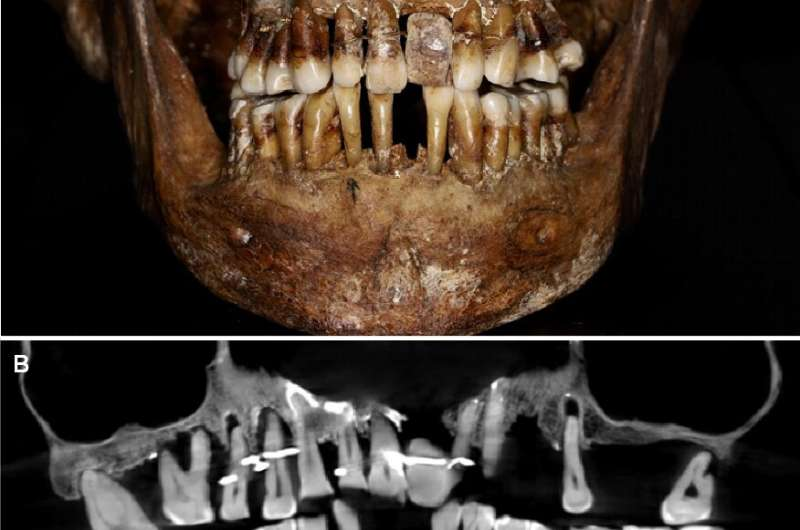The remains of Anne d'Alegre, a 17th-century French aristocrat, were found to have gold wire used to hold her teeth in place, which was discovered 400 years after her death during an excavation at the Chateau de Laval in 1988. The embalmed body was found in a lead coffin, and her skeleton and teeth were well preserved, as reported by Phys. With the help of advanced scanning tools, a team of archaeologists and dentists discovered that d'Alegre had suffered from a periodontal disease that caused her teeth to loosen.
Truth Behind d'Alegre's Smile
A "Cone Beam" scan revealed that gold wire had been used to hold together and tighten several of her teeth, and she also had an artificial tooth made of ivory from an elephant, which was not commonly used at the time. However, the ornate dental work only "made the situation worse," according to the lead author of the study.
The researchers stated that the gold wires would have required constant adjustment, which further weakened the surrounding teeth. D'Alegre likely endured this pain for reasons beyond just her health. At the time, there was significant societal pressure on upper-class women to maintain a good appearance, as it was considered a reflection of their social status.
CBS News said that Ambroise Pare, a contemporary of D'Alegre's, who was a doctor for several French kings and designed similar dental prosthetics, believed that a person's speech would be affected if they were toothless. A pleasing smile was especially important for d'Alegre, who had a reputation as a twice-widowed socialite.

The teeth of 17th century French aristocrat Anne d'Alegre, with a gold wire threading through several.
ALSO READ: 17th-Century Mummified Baby Likely Died Due to Lack of Sunlight Exposure, Virtual Autopsy Reveals
Life of French Aristocrat
Anne d'Alegre lived in a tumultuous period in French history as a Huguenot, a Protestant who fought against Catholics in the French Wars of Religion in the late 1500s. She experienced hardship at a young age, becoming a widow with a young son, Guy XX de Laval, at 21.
On September 1st, 1583, Anne d'Alègre married Guy XIX of Laval, Count of Laval. After he died in 1586, she became known as the Dowager Countess of Laval, of Montfort, of Harcourt, Baroness of Quintin, and Vitré. As a Protestant, she moved from Harcourt to Sedan to raise her son, Guy XX de Laval, in the Protestant faith. However, in 1588, King Henri III removed her guardianship and gave it to Charles of Lorraine, as per Science Alert.
During the Eighth War of Religion, D'Alegre and her son were forced to flee and their property was taken by the king. Her son converted to Catholicism and died in battle in Hungary at the age of 20. D'Alegre died from an illness at the age of 54, after being widowed a second time. The research on her teeth revealed that she had gone through a lot of stress in her life. The lead researcher hopes that this study will help to rehabilitate her reputation. According to World Health Organization, D'Alegre's condition, severe periodontal disease, is a common issue that affects nearly 20% of adults worldwide.
RELATED ARTICLE: Burial Site Filled With Glass, Silver, and Gold Dates Back to Ancient Kingdom
Check out more news and information on Burials on Science Times.














